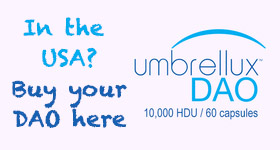Unfortunately for wine-lovers, sulphur dioxide and sulphites are not the only cause of adverse reactions to wine. Histamines and tannins, both of which occur naturally in wine - especially red wine - are thought to be linked to such conditions as itchiness, rashes, diarrhoea and asthma.
Egg, milk and fish products are also sometimes used in wine making as fining and clarifying agents, especially in higher-end wines.
Egg whites may be added to barrels of red wine to remove harsh or excessive tannins, which they do with minimum impact on flavour and colour. Casein, a protein derived from milk, is used to remove brown discoloration, and isinglass, a product made from the swim bladders of sturgeon fish, is another favoured clarifying agent.
Producers may claim that the amounts of these products left in a wine are negligible, but current technology is not able to detect the presence of some allergens at sufficiently low levels to ensure the safety of highly allergic individuals.
If in doubt about the contents of a wine, contact the producers, quoting the product and year.
First published in May 2007
Click here for more research reports
Top of page |










